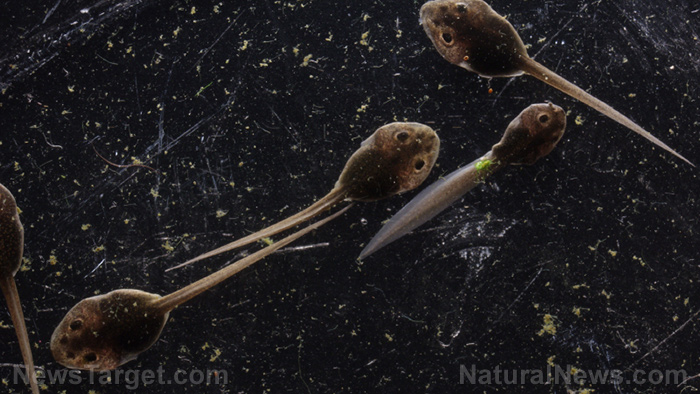
Neuroplasticity is the life-long process where the brain forms and connects new neurons. This growth and its associated learning are powered by proteins that enter the brain with every new lesson.
The latest published research from The Scripps Research Institute (TSRI) suggests that proteins are much more than just fuel for neuroplasticity. The process of protein production of the brain is also an important catalyst for brain development and learning.
Neuroscience expert Hollis Cline explains that our modern lifestyle and surroundings constantly bombard our senses with many experiences. The fact that visual experience could affect the production of important proteins could be significant. (Related: New study proves the UNDENIABLE connection between vaccination and autism.)
Tadpole experiment identifies proteins linked to learning via visual experience
Cline's recent research involved naturally transluscent tadpoles. Their skin is as clear as glass, making it easy to study the brains of live specimens.
TSRI researchers kept the tadpoles in the dark. During this time, Cline's team measured the protein production in the tadpoles' neurons. Then they exposed a control group to ambient light, and an experimental group to a simulation of normal visuals through a screen with moving bars, for four hours.
Following the experiment, Cline's team analyzed the protein production levels once more. They reported that the levels of 83 proteins in the experimental group went either up or down.
Most of the affected proteins were specialized "effectors" that filled specific roles in cells. The exceptions were three regulatory proteins (eIF3A, FUS and RPS17) that built the production structures for the effector proteins.
Before this experiment, neuroscientists like Cline believed that regulatory proteins did not affect learning from visual experience. Now the TSRI team believes that these proteins are very important.
Production of enough regulatory proteins helps brains cells form neural connections. This also improves the learning process.
The TSRI researchers confirmed the physical changes wrought by visual experience by tagging neurons with biomarker proteins. They reported that the regulatory proteins improved the growth of neurons in tadpoles.
Proteins in the brain affects how tadpoles learn from visual experiences
Cline's team proceeded to determine if altering the production of these proteins could change the learning behavior of tadpoles. They used the natural instinct of pollywogs to steer clear of potential predators.
A screen was installed beneath the tank. This screen projected large spots that mimicked predators. The researchers observed the tadpoles to see if they would avoid the spots.
They reported that tadpoles from the experimental group did much better at avoiding the simulated predators than those from the control group. This finding hints at the growth of neural circuits that can interpret visual information.
However, the absence of all three regulatory proteins caused the tadpoles to perform worse during the predator avoidance test. This held true even if the larva benefited from visual experience.
Finally, the TSRI researchers cross-referenced their list of the 83 proteins they identified with two separate databases concerning human brain disorders. One database comprised people who were vulnerable to autism, while the other involved people with the similar "fragile X syndrome."
Twenty-five percent of the listed proteins overlapped with the genes affected by autism and fragile X syndrome. Cline theorizes that changes in the regulatory proteins disrupt the expression of the effector proteins that help people comprehend the sights, smells, sounds, tastes, and textures they experience.
"This brings to mind a new dimension for understanding autism," said Cline.
"It's fascinating to think about how sensory experience affects the brains of our children,"she added. "We may wittingly or unwittingly affect how their brains develop."
Learn about other risk factors that may lead to autism at AutismTruth.news.
Sources include:
Please contact us for more information.























